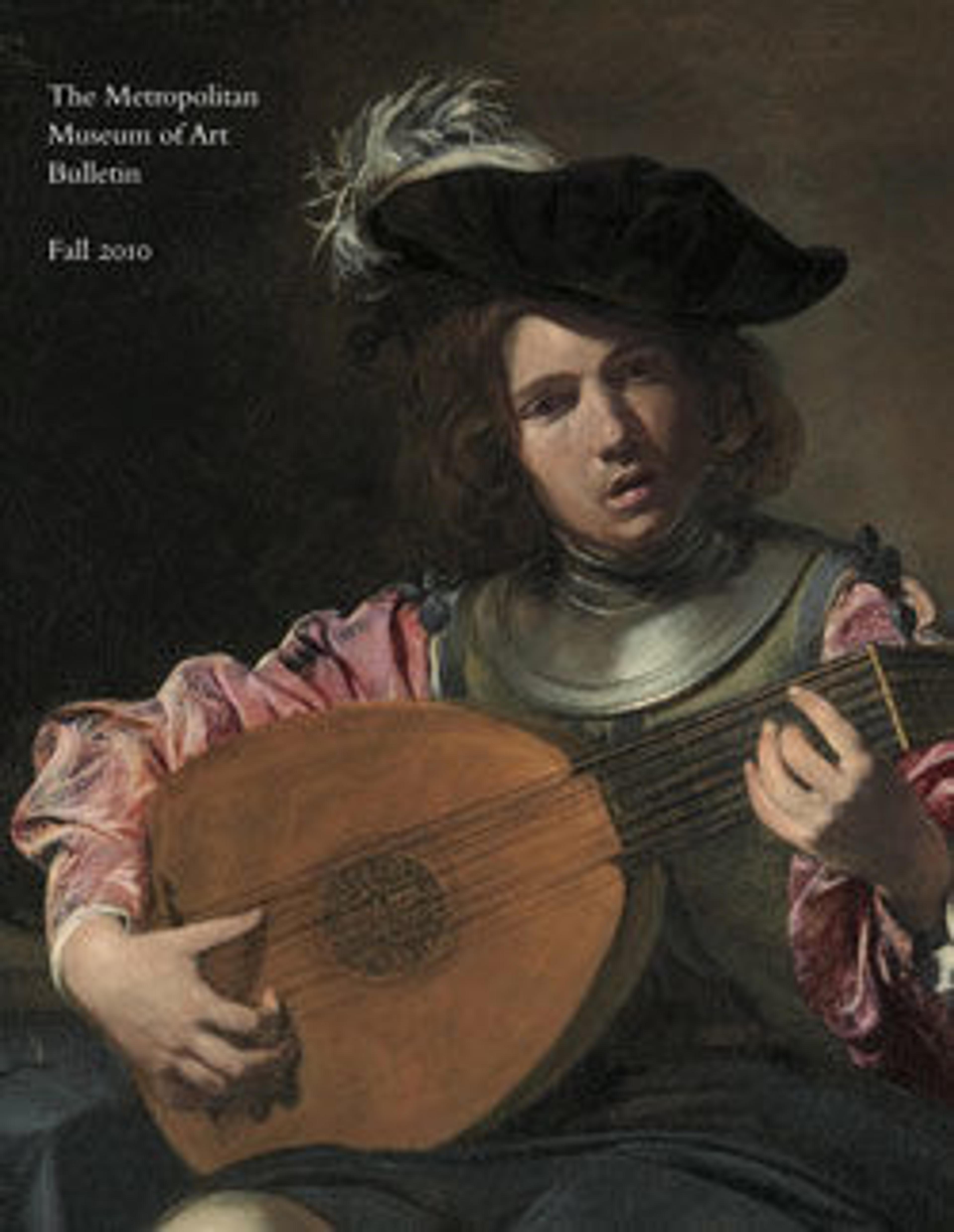Qur'anic Compilation Page
The manuscript this folio comes from contains the five suras, or chapters, from the Qur'an that start with the phrase al-hamd li-allah (praise to God). The pages of the manuscript were laid out and decorated in the same way as a complete Qur'an: each page has five lines of beautiful muhaqqaq script outlined with brush-applied gold, rosettes mark the end of each verse, and bands of illumination indicate the start of each chapter. Folios from the manuscript are now dispersed, but the name of the calligrapher, Abu Muhammad 'Abd al-Qayyum ibn Muhammad ibn Karamshah al-Tabrizi, is given in the colophon on a page in a private collection. The colophon does not provide the date of the manuscript or the name of its patron, but the style of the illumination and calligraphy is comparable to that in Qur'ans made for Mamluk patrons in the late fourteenth century and in slightly later copies made for the early Timurid rulers. The manuscript is thought to have been commissioned by a member of the Jalayirid royal family, probably Shaykh Uvays, who reigned from 1356 to 1374 and had a capital at Baghdad.
Artwork Details
- Title: Qur'anic Compilation Page
- Calligrapher: Abu Muhammad 'Abd al-Qayyum ibn Muhammad ibn Karamshah al-Tabrizi
- Date: ca. 1370
- Geography: Possibly made in Iraq, Baghdad
- Medium: Ink, gold, and opaque watercolor on paper
- Dimensions: Text block:
H. 14 7/16 in. (36.7 in.)
W. 10 1/2 in. (26.7 cm)
Full page:
H. 16 15/16 in. (43 cm)
W. 13 3/4 in. (35 cm) - Classification: Codices
- Credit Line: Purchase, Louis E. and Theresa S. Seley Purchase Fund for Islamic Art and A. Robert Towbin Gift, 2008
- Object Number: 2008.31
- Curatorial Department: Islamic Art
More Artwork
Research Resources
The Met provides unparalleled resources for research and welcomes an international community of students and scholars. The Met's Open Access API is where creators and researchers can connect to the The Met collection. Open Access data and public domain images are available for unrestricted commercial and noncommercial use without permission or fee.
To request images under copyright and other restrictions, please use this Image Request form.
Feedback
We continue to research and examine historical and cultural context for objects in The Met collection. If you have comments or questions about this object record, please contact us using the form below. The Museum looks forward to receiving your comments.
